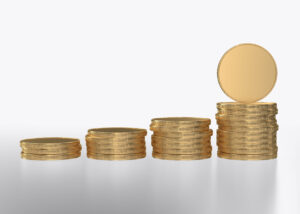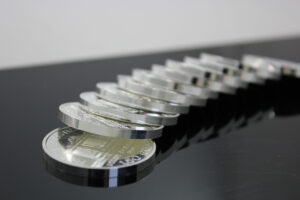In today’s world of debt creation and central bank balance sheet expansion, one asset can still be bought at the same price it was over 40 years ago.
As the US stock markets surge to new highs, silver remains one of the oldest forms of money and stores of value while not having fully participated in today’s great everything asset bubble.
Its unique properties make the metal non substitutable for many industrial applications. Silver is one of the best conductors of electricity and heat, as well as being one the most reflective metals. In addition, silver is a powerful antimicrobial agent, fights infections, aids in cold and flu prevention, and heals wounds and burns. In short, silver is vital to human existence and technological advancement.
Oddly, one of the most valuable coins sold in the world was not gold but silver. In the world of digital assets, NFT’s, Crypto Tokens, and other intangibles, this silver coin has outshined them all.
When measuring value over the last 50 years since the USA ended gold convertibility in 1971, the S&P 500 and gold both returned over 4,000% while silver performed 1450%. In order, for silver to equate to gold’s performance over that same time, the price would need to rise to $65 an ounce. That is nearly a 3-fold increase from the current price of $23.80.
As overall asset prices continue to rise, investors may begin to look at underappreciated assets to find hidden value. Although, silver’s market is small compared to other monetary assets or commodities, the price is publicly traded and transparent. Making it attractive for fund managers and high net worth investors to add to their portfolios.
At least 60% of the demand for silver comes from industry, where the metal is consumed into other products. Industry demand tends to be consistent, whereas investment demand for coins and bars tend to be the outlier that moves the overall price. As we have seen in 2020 and the first half of 2021, silver has seen an enormous pick up in investment demand as debt levels and money supply have exploded. Investors have awoken to the monetary role that silver has offered for thousands of years. In fact, one of the oldest coins, Lydian Lion, included silver in its content. Silver has been mentioned 351 times in the bible and has outlasted every previous empire and their fiat currencies.
Silver’s role as a financial asset is growing in recognition. The paper or derivative markets such as unallocated accounts in London or futures trading in New York have dominated the price action in the past. However, this may be changing post Covid. We have seen a massive amount of deleveraging in precious metals. This is a fundamental shift in the market. Meaning the physical product may start to dictate price action as demand for the actual metal grows. In the past, investors have not been as interested in taking delivery. However, with increasing systemic and counter-party risks, the need to secure one’s assets from these and other event risks are growing. Physical metals are one of the only asset classes that offer this time-tested solution. (First published in Executive Global Magazine).



